What’s the best way to dispose of used cat litter? Are there any alternative ways of getting rid of cat litter? And how often should you change your cat’s litter?
Let’s face it; we buy cat litter with the same level of enthusiasm as we buy toilet paper. It’s just one of those things you have to do, right? It’s a basic necessity in any cat household and completely indispensable when it comes to keeping your home clean! This is the case even if your cat is an outdoor cat that usually goes to the bathroom outside. Still, even though your cat goes outdoors, it doesn’t mean they won’t also appreciate finding a quiet place to do their business indoors. As a rule, cats go to the bathroom two to four times a day. When they’ve eaten a lot and have to digest a large amount, they might even have to go more often than that. To ensure that your furry friends feel comfortable using the toilet, you should remove their droppings several times a day. Always dispose of faeces and soiled litter properly and refill the box with fresh litter.
Are there any products or accessories that can help you dispose of used cat litter? Which kitty litter should you use to avoid waste and thereby protect the environment while also going easy on your wallet?
Where to dispose of cat litter
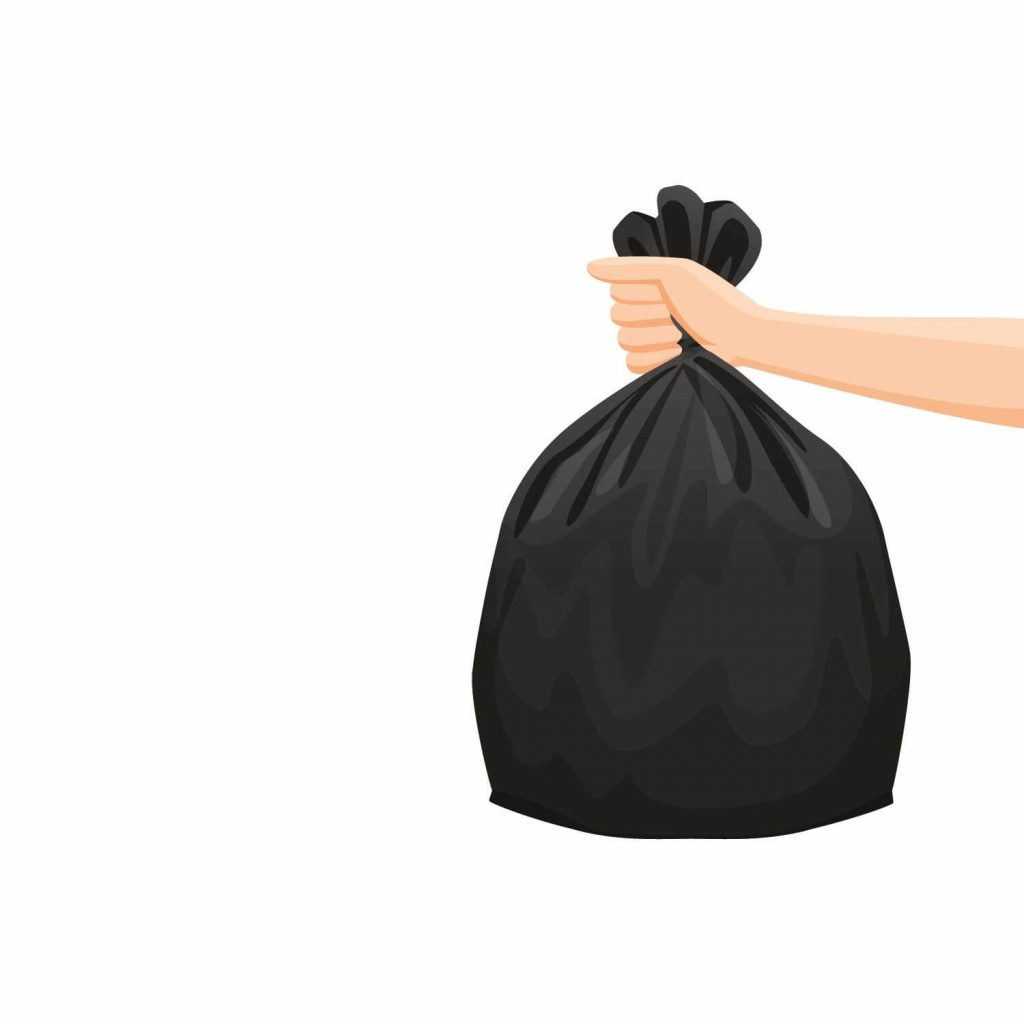
In 1947, an American named Ed Lowe came up with the idea for mineral-based cat litter. Unfortunately, he probably didn’t consider the fact that the litter would have to be disposed of somewhere after use. Today, mineral-based cat litter is one of the largest single contributors to residual household waste. And it’s only getting to be more and more! In the 1950s, there were roughly 2.7 billion people on Earth, whereas today there are more than 7.5 billion¹. If we consider the fact that cats are still the most popular pet on the planet, then it’s only logical that the number of house pets will have also increased. Ergo: more people, more cats. In turn, this means more cat litter that needs to be disposed of. But where are we supposed to put it all?
¹Source: BiB Federal Institute for Population Research (2024): “Bevölkerungszahl und ihr Wachstum (1950-2020)”, online at BiB – Fakten – Bevölkerungszahl und ihr Wachstum, Welt (1950-2020) (bund.de), accessed on 8 March 2024
Which waste bin should I use for regular cat litter?
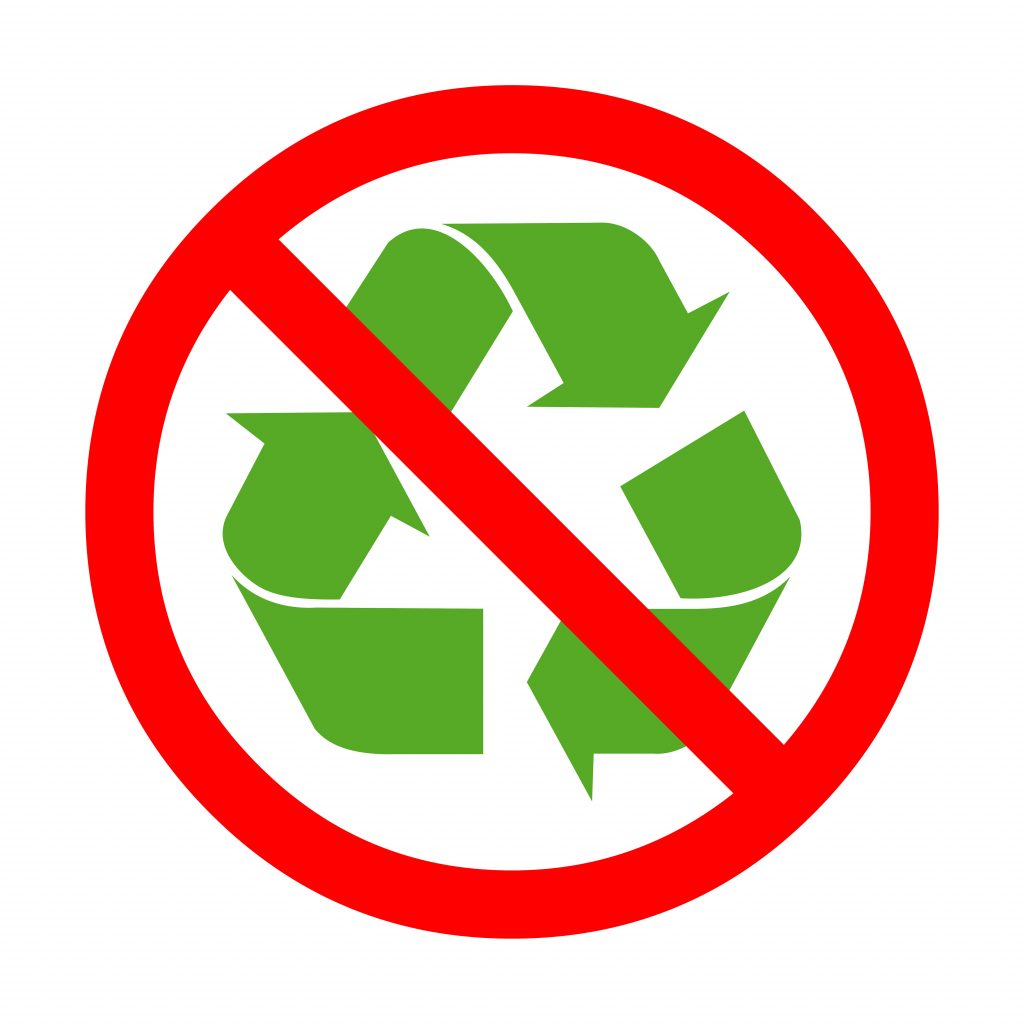
Regular cat litter made of bentonite, lime quartz sand or silica belongs in the residual waste bin. What exactly is residual waste, you ask? Residual waste is waste that cannot be collected separately or recycled. Mineral-based litter is extracted in open-cast mines and comes in two main types, clumping and non-clumping. Manufacturers often use additional substances to better bind liquid and odour. This kind of litter is very heavy and should be disposed of in the residual waste bin. Silica litter in the form of granules or pellets is light and absorbent, but it only comes in non-clumping form. This means that if you use silica litter, it also needs to be completely replaced with fresh litter at short intervals and disposed of in the residual waste bin.
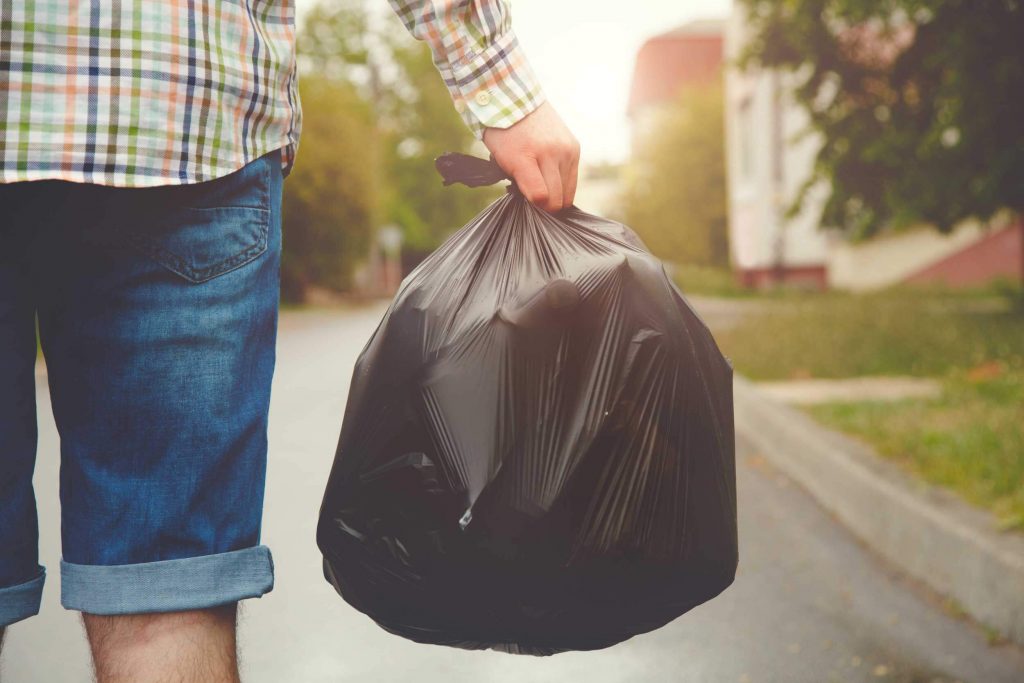
NOTE: The problem with regular cat litter is that you have to dispose of it in the residual waste bin. It then goes to the incinerator and ultimately into a landfill. In other words, in addition to the obvious negative side effects of this type of litter, which include its extreme smell and the fact
that it’s very heavy to carry, it’s possible that you’re also going to have to pay higher waste disposal fees.
Which waste bin should I use for plant-based cat litter?
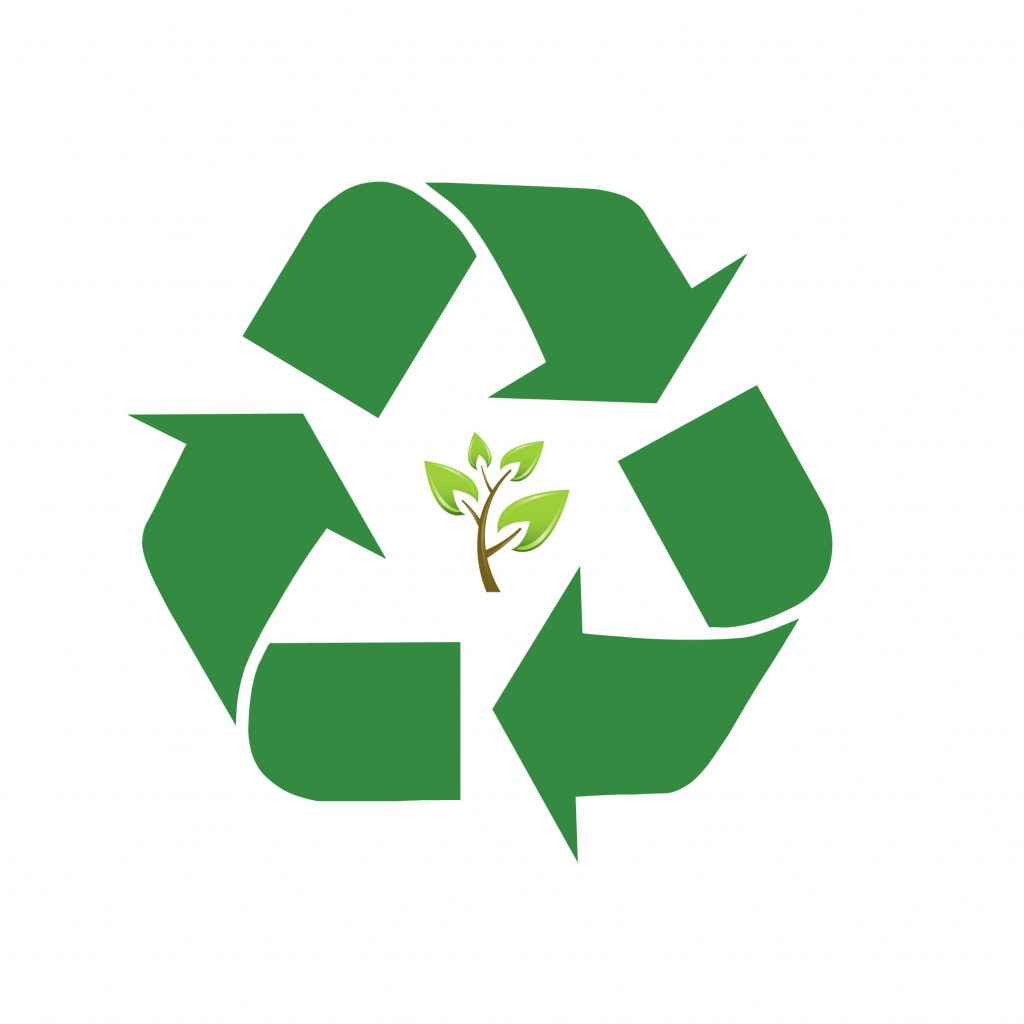
Plant-based kitty litter made from renewable raw materials can be disposed of in the residual waste bin. However, if your regional waste disposal company approves it, you might also be allowed to dispose of it in the organic waste bin. What exactly goes in the organic waste bin? Only biologically recyclable waste materials are permitted in an organic waste bin. Plant-based cat litter like Cat’s Best® draws on the special properties associated with the capillary effect of plant fibres, which make it possible to absorb liquid effectively and bind unpleasant odours inside the fibre. Cat litter made from plant fibres is light and very economical to use. It’s available in clumping and non-clumping versions. Plant-based cat litter doesn’t pollute the environment and will decompose completely via natural decomposition processes, regardless of whether you dispose of it in the residual waste bin or the organic waste bin
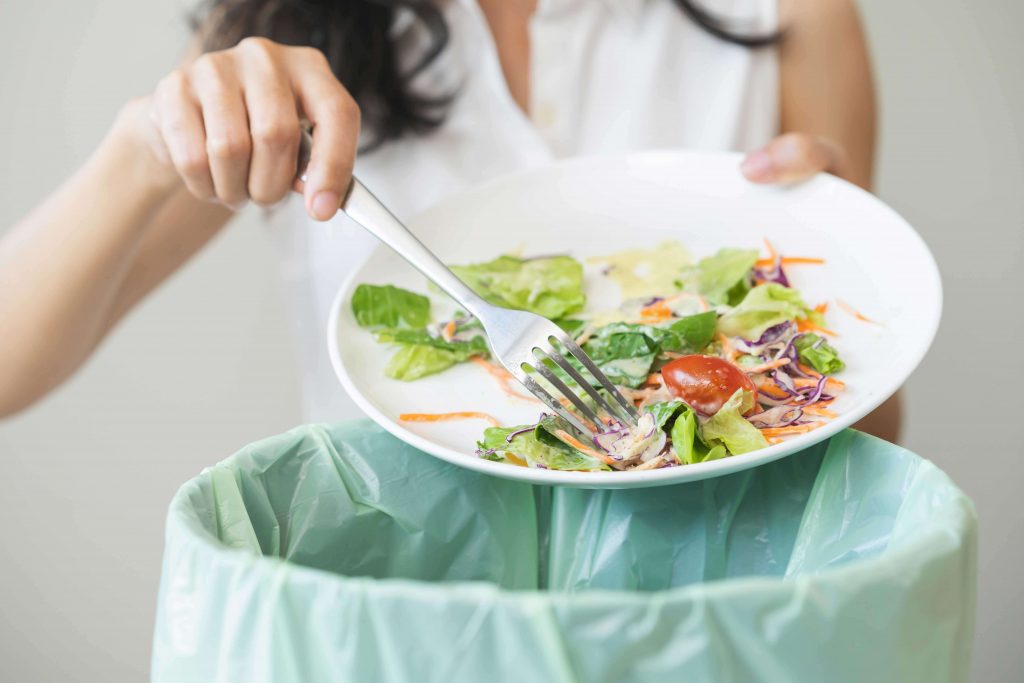
NOTE The raw materials used in plant-based cat litter can be recycled after use. Even as waste, they still make a valuable contribution: the processes of methanisation and composting can ultimately turn cat-related waste into biogas or fertiliser. This means that cat litter made from plant fibres is good for cats, people and nature.
Can plant-based cat litter be disposed of in the organic waste bin?
In Germany, the disposal of plant-based cat litter in the organic waste bin is regulated at the state
level. In other words, whether or not you’re permitted to put cat litter in the organic waste bin depends on your local waste disposal authority. Some countries in the world don’t yet permit litter products to be added to the composting process. In the coming years, however, a European directive on the recycling of organic waste will hopefully provide more clarity here. Plant-based litter is already
very light and also weighs little when you dispose of it: this makes it easier to transport and recycle. The contents of organic waste bins are industrially composted or methanised. In other words, as a completely residue-free, CO2-neutral energy source, sustainable cat litter makes a positive contribution to the environment, even when it’s disposed of via the regular waste bin.
PLEASE NOTE: When disposing of organic waste, do not use plastic bags, not eben ones made out of organic plastic!
Where should you never dispose of cat litter?
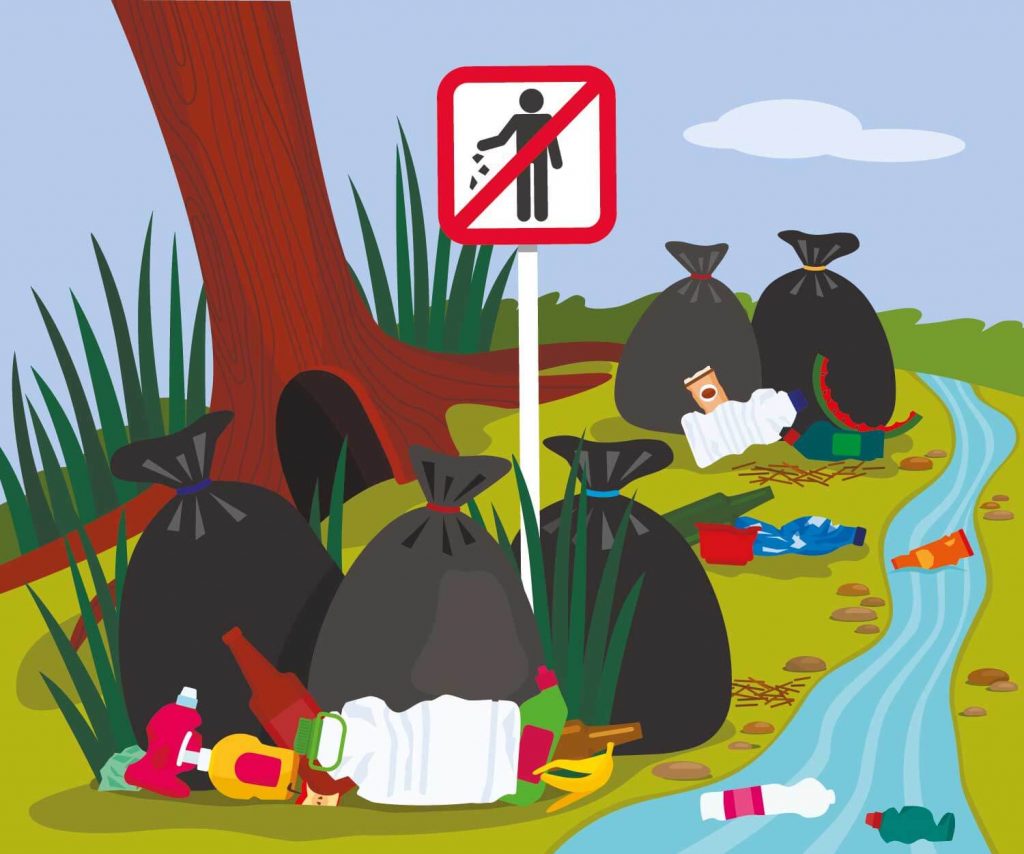
Cat litter should never be disposed of in the woods, in forests, in a field or in your own garden. Why? Because conventional cat litter will not decompose and the waste³ itself will not dissolve. In contrast, plant-based cat litter consists of natural fibres such as wood, corn and straw. This means that its raw materials
are 100% biodegradable and compostable. Still, used cat litter can contain toxoplasmosis pathogens; for example, if cats eat raw meat, it’s possible they will excrete oocytes in their faeces. An infection with toxoplasmosis pathogens can be particularly harmful to the health of pregnant women and people with
compromised immune systems. Anyone who does not dispose of cat litter properly
is acting against the regulations contained in the Closed Substance Cycle Waste Management Act.² This can result in severe penalties!
²Source: Federal Ministry for the Environment, Nature Conservation, Nuclear Safety and Consumer Protection, BMUV (as of 29 March 2023): “Overview of the Closed Substance Cycle Waste Management Act”, online at BMUV: Overview of the Closed Substance Cycle Waste Management Act, accessed on 11 March 2024
³Source: SWR Marktscheck #Nachhaltigkeit #Oekochecker #Katzenstreu , [YouTube-Video.], “Darum ist Katzenstreu ein riesiges Müllproblem I Ökochecker SWR ” from 16 March 2023, Darum ist Katzenstreu ein riesiges Müllproblem I Ökochecker SWR – YouTube, accessed on 15 March2024
TIP:
In Germany, waste disposal is regulated at the state level, which means that there can be major differences in waste disposal rules depending on the municipality you live in. The best thing to do is to contact your local public authority and ask about the best way to dispose of used cat litter!
How often should you change your cat’s litter?
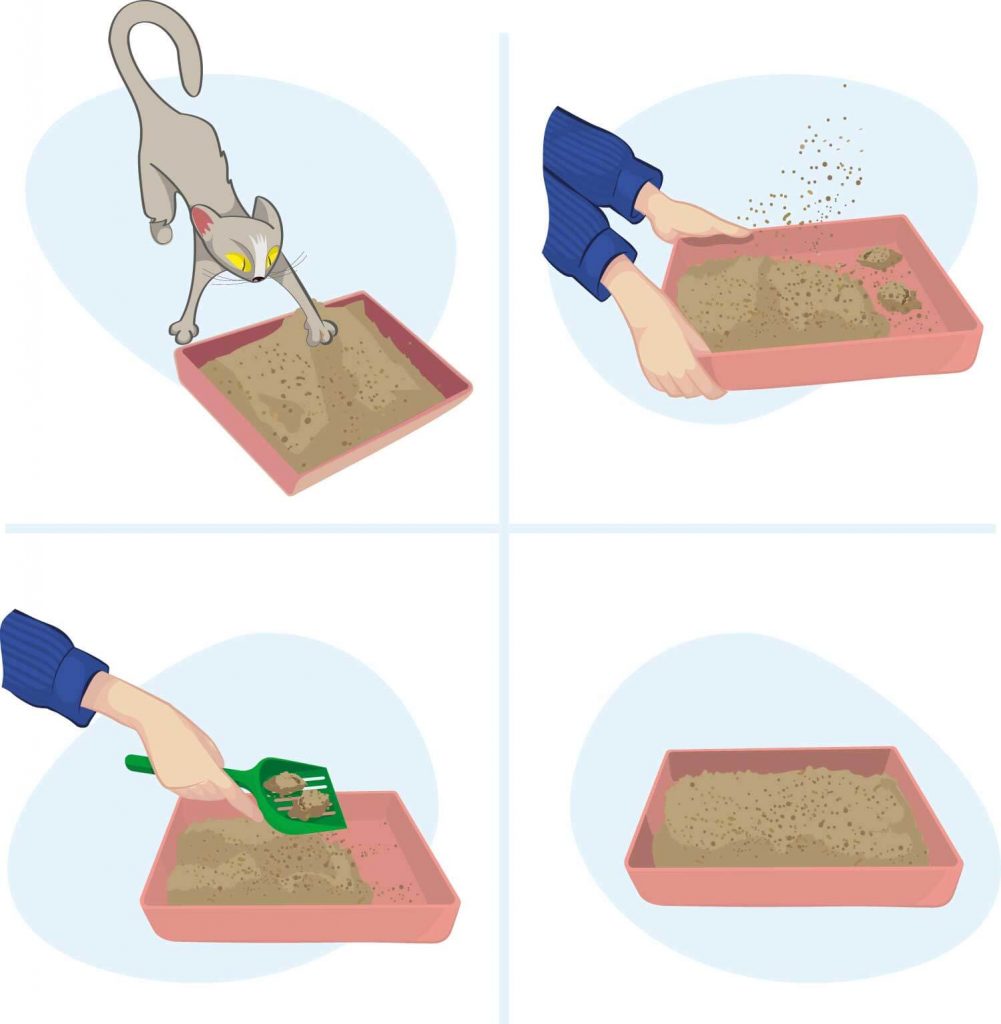
How often you change your cat’s litter depends on your cat and the type of cat litter you’re using. How old is your cat? Are they an outdoor or indoor cat? What do they eat? The outside temperature also plays a role. In summertime, warm temperatures can cause the litter box to start to smell more quickly, and when the litter box becomes a breeding ground for bacteria, your indoor air quality will suffer. Don’t forget that bacteria can only thrive if there’s enough moisture available to them. For this reason, when selecting a cat litter, you should always get one that binds liquids optimally so that you can make sure not to create a breeding ground for bacteria.
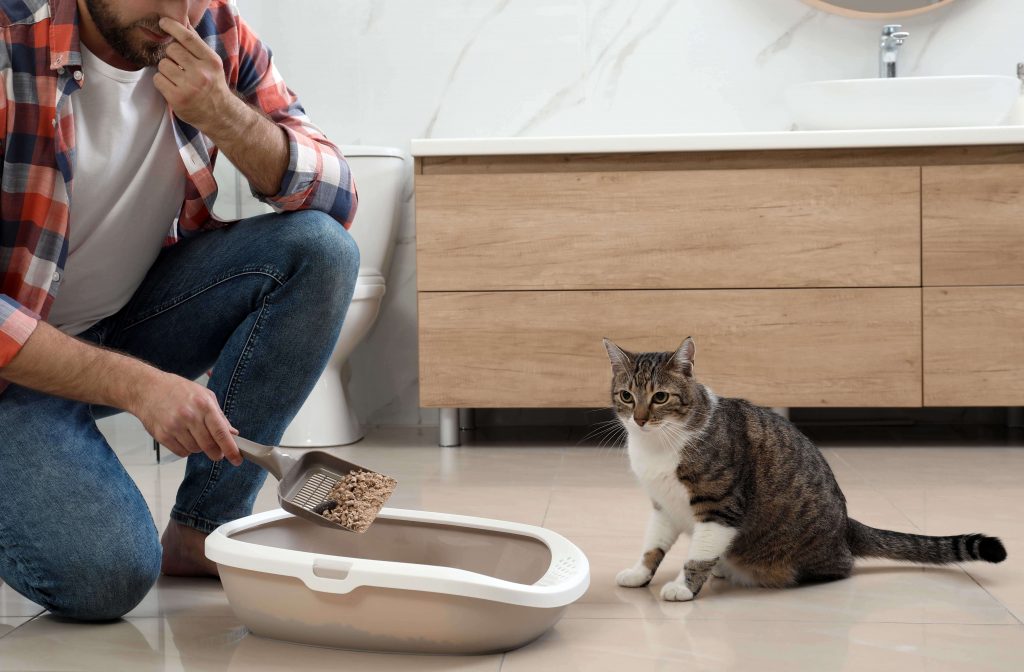
How much cat litter should be in my cat’s litter box?
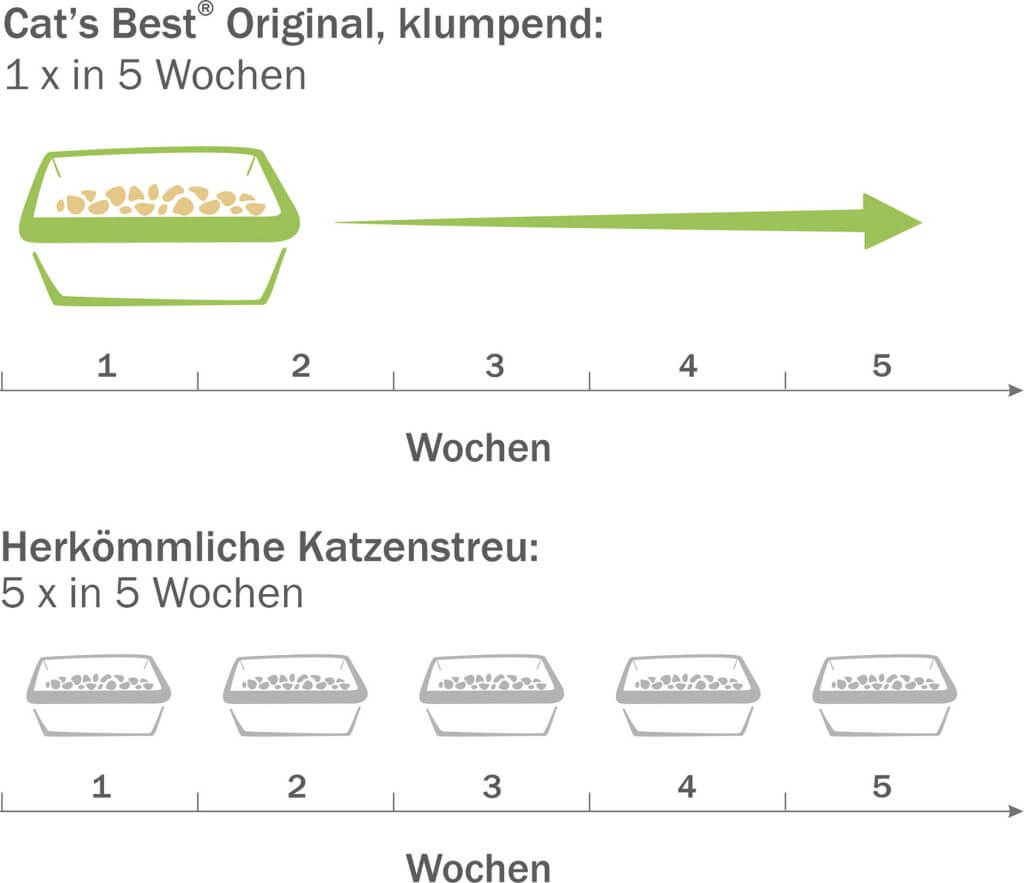
The amount of cat litter you should have in your
litter box depends on the type of litter you’re using. It all hinges on how quickly the liquid is absorbed and how high the litter level needs to be to prevent seepage down to the base of the tray. Conventional cat litter only partially absorbs moisture, which means the remaining liquid will collect at the bottom of the litter box and form an ideal breeding ground for germs. These are the germs that are responsible for creating foul smells and an overall lack of hygiene. When you use a plant-based cat litter like Cat’s Best®, you won’t need to change the litter as often. The plant fibre technology process specially developed for Cat’s Best® uses cutting-edge technology to refine active wood fibres in such a way that they’re able to absorb and trap liquids up to 7 times their own weight. This prevents odours from developing in the first place. Plus, one basic filling of Cat’s Best® can remain in the litter box for several weeks before the litter needs to be changed.
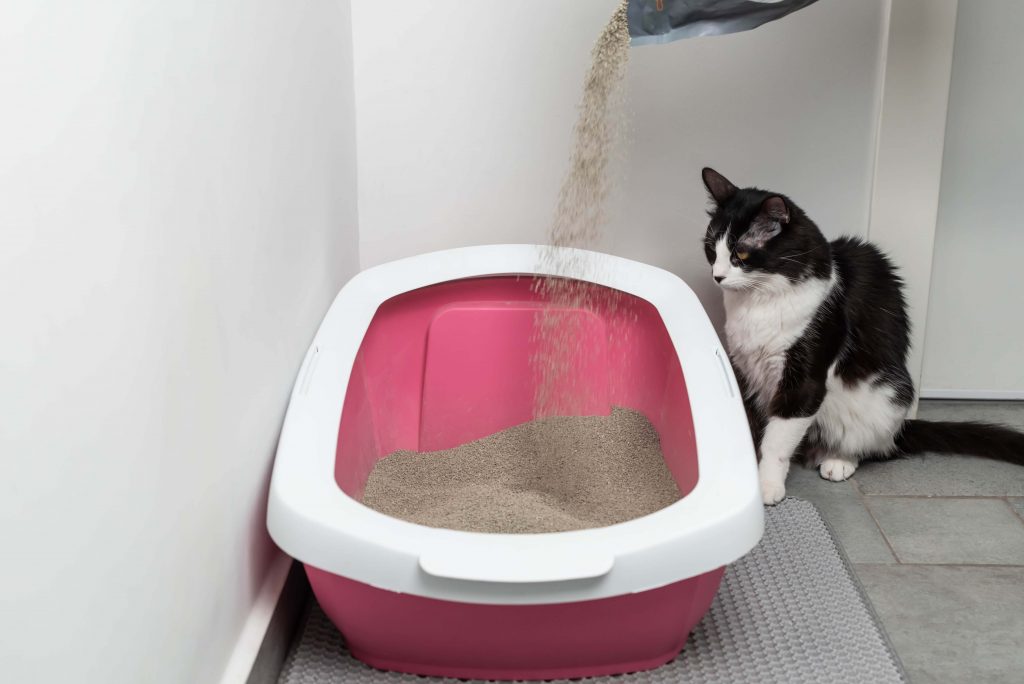
How often should a young kitten’s litter be changed?
At the age of three to four weeks, baby kittens are old enough to be trained to use a litter tray. To make it even easier for them, you can purchase a special flat plastic tray from your local pet store. These trays have a deep rim and a ribbed entry aid so that the little fur balls can climb in and out easily. Just like their adult relatives, baby kittens are extremely sensitive to odours; they won’t like unpleasant smells at all and will do anything to avoid them. This is why you should make sure to change you kitten’s litter on a regular basis. Ideally, it’s best to remove the soiled litter several times a day, and simply refill with fresh litter. This will ensure that the litter box continues to be a comfortable place your kitten will be happy to visit time and again.
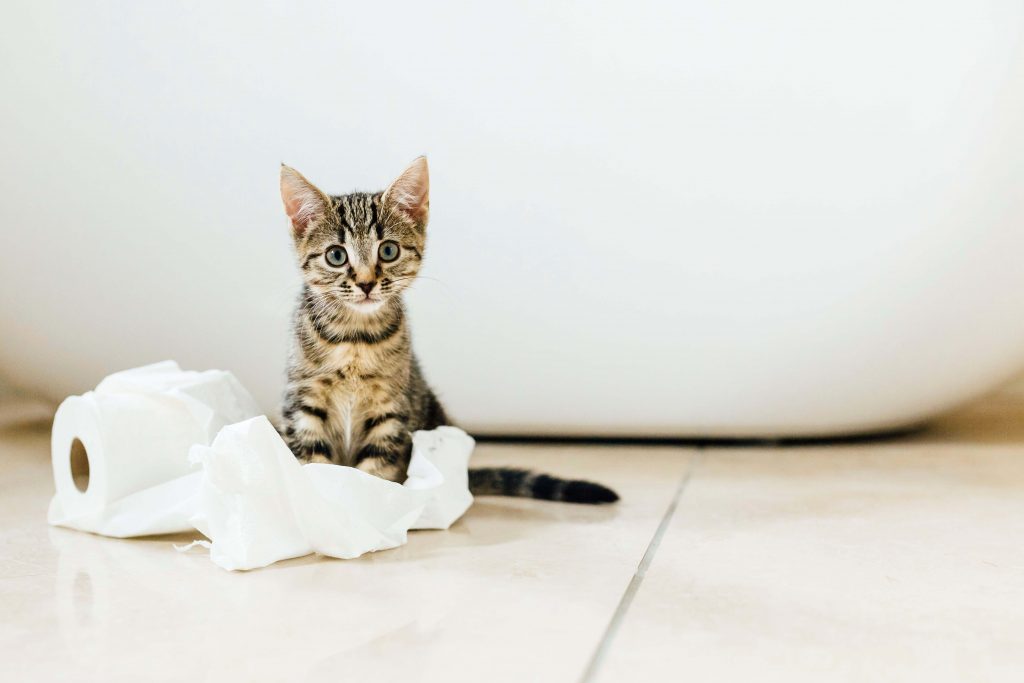
CAUTION:
Young cats are curious in much the same way that human children are. In other words, to avoid the unpleasant consequences of your kitten accidentally swallowing litter, it’s best to use plant-based litter for baby kittens. Cat litter made from pure plant fibres is actually quite easy to digest!
How often should you change an adult cat’s litter?
There’s no general rule for how often to change the litter used by adult cats. Again, how often you change the litter depends on the type of litter you’re using, how active your cat is, what kind of food they eat and how fast they’re able to metabolise what they eat. Depending on when the cat is fed and how digestible their food is, it can take roughly one to two days for them to completely digest and pass it through their system. A healthy cat usually defecates once or twice a day and urinates two to four times. Cats suffering from some kind of disease may have problems defecating or urinating. In such cases, the disease might cause them to produce more or less excrement.
TIP: If you’re using clumping litter, you won’t have to replace your cat litter as often as with regular litter. For example, thanks to its high absorbency rate, one basic filling of Cat’s Best cat litter will only need to be replaced roughly every 5 weeks.
How often should you change the litter when you have several cats?
How often should you change the litter in a multi-cat household? The first thing to know is that if you have several cats in your home, you should also have several litter boxes. In other words, the number of cat litters should equal the number of cats + 1. You should make sure to remove any faeces in the trays on a daily basis. Dispose of all excrement and soiled litter and refill with fresh litter. If you’re using clumping litter, there will still be enough clean litter in the tray after you remove the clumps. Depending on the number of cats and how often they use the litter box, the clean litter can remain there and continue to be used. After a certain time, however, there won’t be enough fresh litter remaining. At this point, both you and your furry friends will be happy if you undertake a complete litter change. Just remove all the old litter from the trays, clean them thoroughly and refill them with fresh cat litter to a height of 7 to 10 cm.
Which products are helpful when disposing of cat litter?
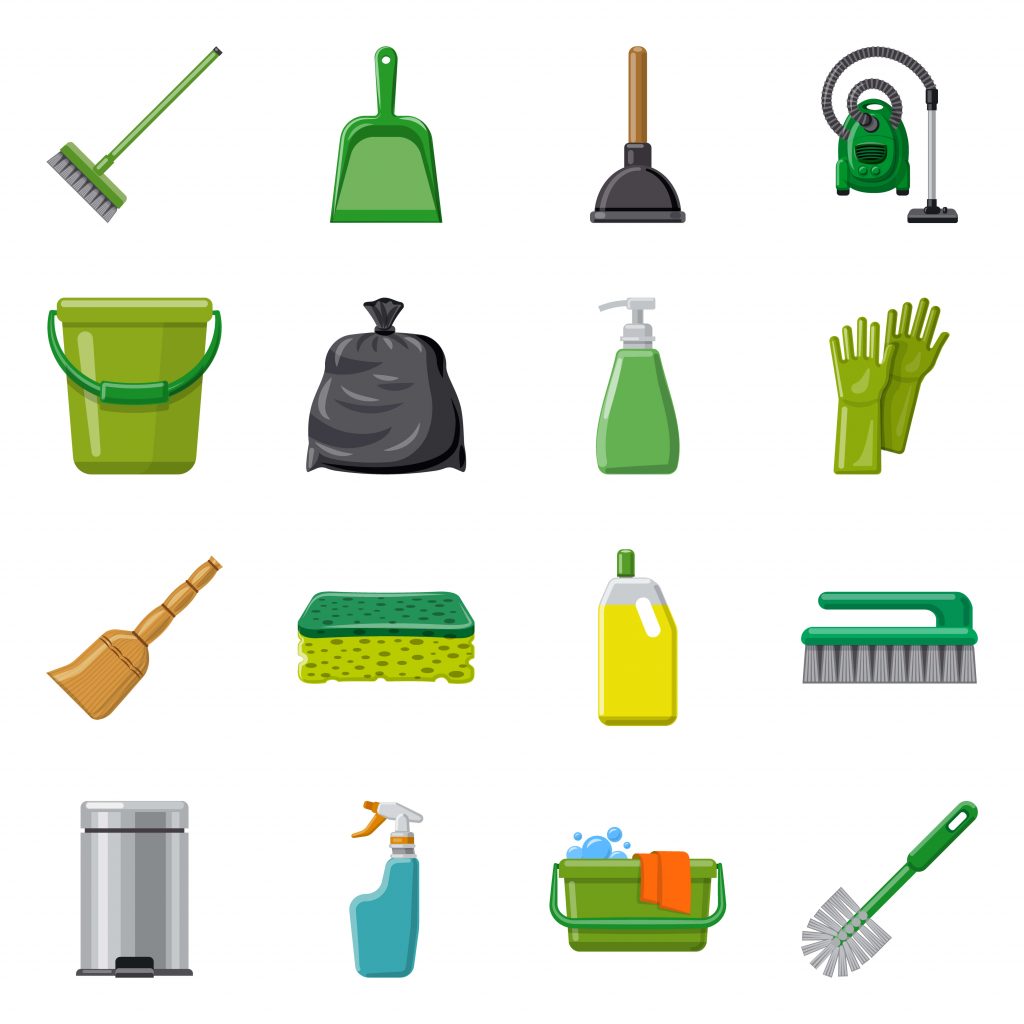
VeBy now we know that faeces, soiled clumps of litter and all other droppings should be disposed of on a daily basis. If the litter is getting low, you should add fresh litter as soon as possible. Remove droppings every day – is that really necessary? Yes, absolutely! If you don’t remove all excrement from the litter tray, your cat might refuse to use it even when you’ve completely replaced the litter. It’s always a good idea to check and see if there’s anything “solid” in the litter tray and dispose of it straight away. And don’t worry! You don’t need to get your hands dirty! It’s best to use a special scoop for this. With the right scooper, it can be very easy and convenient to remove soiled areas from the litter. Your local pet shop and many online retailers will have a large selection of models to choose from. Are there any other products that can help in the process of disposing of cat litter?
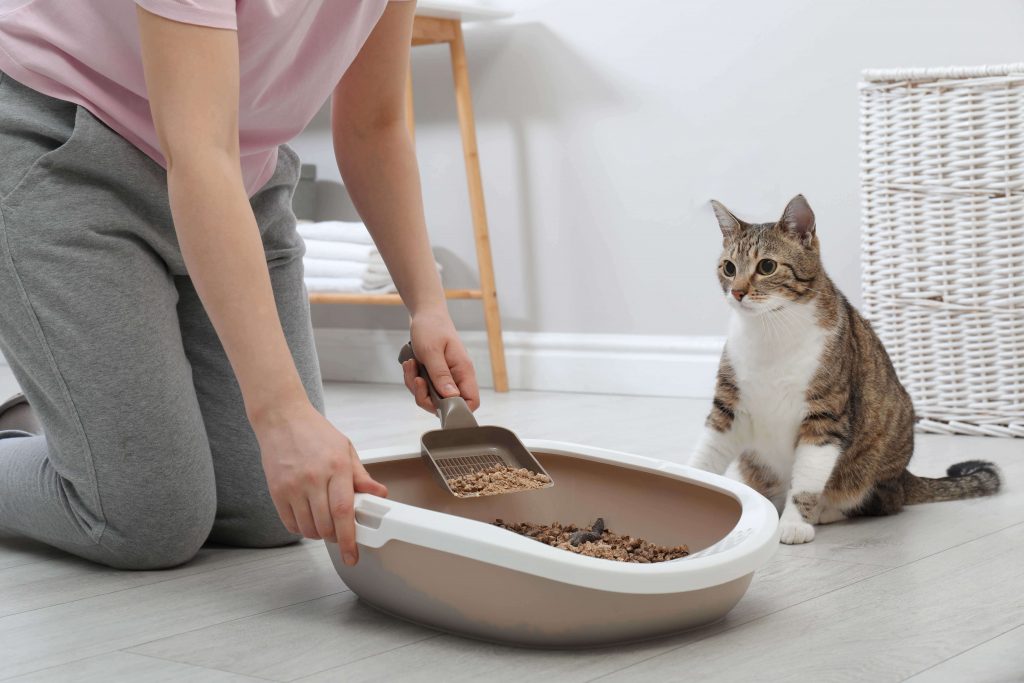
TIP: The type of cat litter you use is the key factor when looking for the perfect litter scoop. It’s quite easy – and economical – to use a scoop to partially clean litter trays containing clumping litter: the scoop’s grid spacing of 7 or 9 mm makes it possible for the litter that’s still clean to fall through the grid and remain
in use!
Self-cleaning litter boxes
A self-cleaning litter box⁴ can be a helpful tool in the whole process of cat litter disposal. Every time your cat goes to the toilet, these electric litter trays will collect the dirty litter your cat leaves behind without you having to lift a finger. After a certain period of time, all you’ll have to do is dispose of the dirty litter collected thus far. Self-cleaning litter trays are available in different shapes and sizes. Some are even equipped with activated charcoal filters and waste bags to minimise odours. Most self-cleaning models are designed for clumping litter, so you can use both plant-based and mineral-based clumping litter. The higher the quality of the litter and its clumping ability, the easier it will be to clean the litter box. If you’re looking to switch to a self-cleaning toilet, it’s best to use the clumping litter your cat’s already used to. This way, your cat will feel more comfortable in their new toilet and continue to enjoy the high quality they’re used to!
⁴Source: WELT VERGLEICH, Vergleich.org (03/2024): “SELF-CLEANING Litter Box TEST & COMPARISON, The top products in the self-cleaning litter box comparison”, online at Self-cleaning litter box test and comparison 2024 | WELT.de, accessed on 21 June 2023
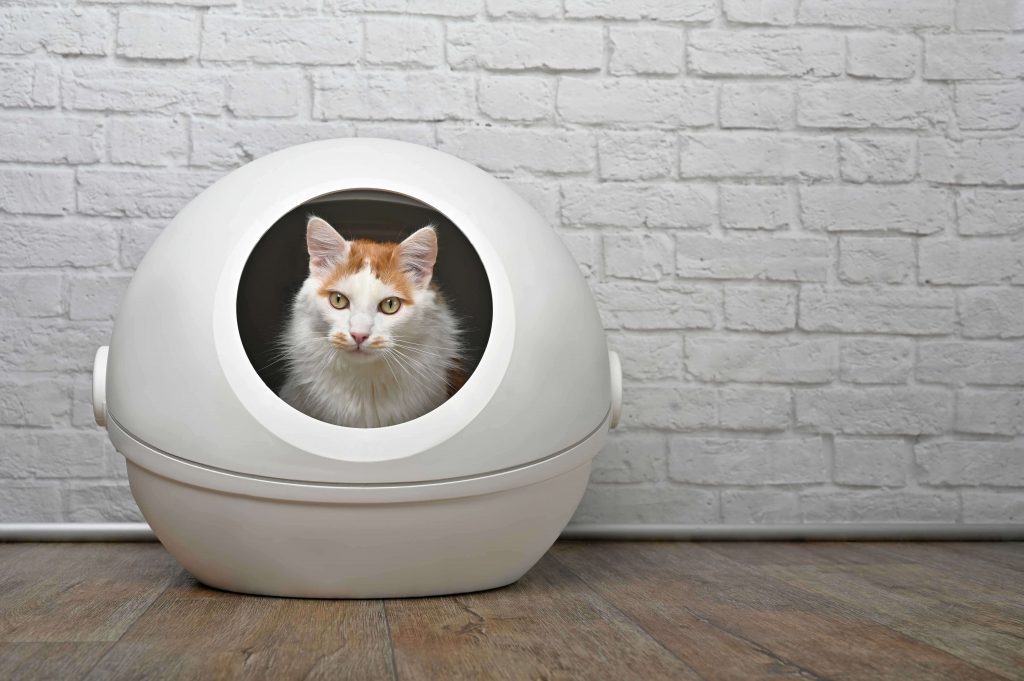
THINGS TO CONSIDER BEFORE BUYING:
Self-cleaning litter boxes often come with a cover! Unfortunately, many cats do not like toilets with covers on them. In the wild, they would never go into a cave to do their business. And don’t forget, cats should be able to get in and out of the litter box with ease!
Cat litter bucket
A cat litter bucket can also be helpful in the process of disposing of cat litter. Much like self-cleaning litter trays, these containers function as a kind of collection vessel where the soiled litter can be stored for as long as possible before you dispose of it outside your home. Cat litter buckets⁵ contain air-impermeable foils that make it possible to safely enclose the cat’s droppings while also ensuring that odours don’t escape. Cat litter buckets are available in different shapes and sizes, and this will determine just how much cat litter one can hold before you have to get it out of your home. Some models even come with a scoop and holder that make it easier to remove the litter from the tray
⁵Source: WELT VERGLEICH, Vergleich.org (03/2024): “Cat litter disposal bucket comparison 2024. The best cat litter buckets in comparison.”, online at Cat Litter Disposal Bucket Test & Comparison “ Top 12 in March 2024, accessed on 15 March 2024
A carpet for your cat’s litter area
Cat owners will already be very familiar with this problem. After your cat does their business in the litter box, they proceed to leave little pieces of litter everywhere: in the living room, on the floor, on the sofa and even in your bed! Cats love to dig extensively in their litter, and all of this digging will cause cat litter to fly out of the tray and also get carried into the rest of your home via the cat’s paws and fur. If you put a carpet with a special surface in front of the litter tray, it can help prevent this by effectively catching loose cat litter. This rug should be non-slip as well as dirt and water repellent. A cat-friendly, high-pile rug should also be made of flexible fibres that are gentle on the cat’s paws. These rugs should be extra wide so that they can prevent the area around the litter from turning into a pebble beach.
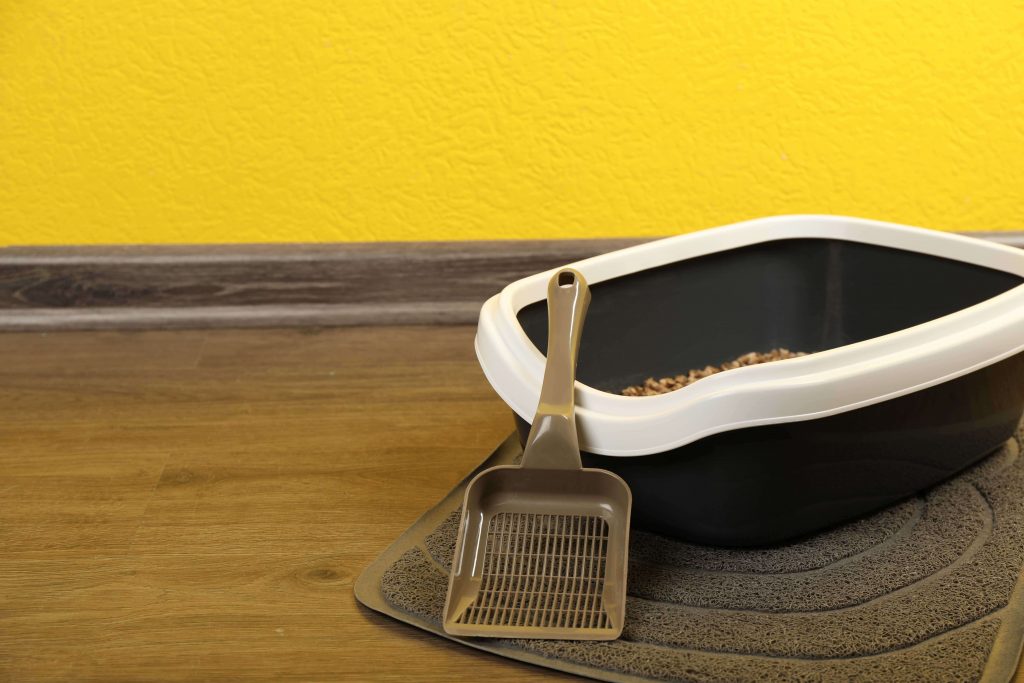
Odour stoppers?
Can odour stoppers help in the process of disposing of cat litter? Since cats love to eat meat, they tend to excrete large quantities of ammonia and hydrogen sulphide, which are responsible for the foul smell of cat urine. The conventional system of open-pored mineral litter granules cannot effectively solve the odour problem, because moisture is only bound to the surface of these granules and only dries off gradually. This is why many of these litters use odour blockers or try to mask the odours with aromas and perfumed substances. Litters that come with their own strong scent – such as baby powder, vanilla, rose and lavender – are intended to mask litter box odours, rather than stop them in the first place. In contrast, a plant-based cat litter like Cat’s Best doesn’t even need an odour stopper. This litter has revolutionised cat hygiene thanks to its absorbency, efficiency and its ability to bind odours – all in a completely natural way.
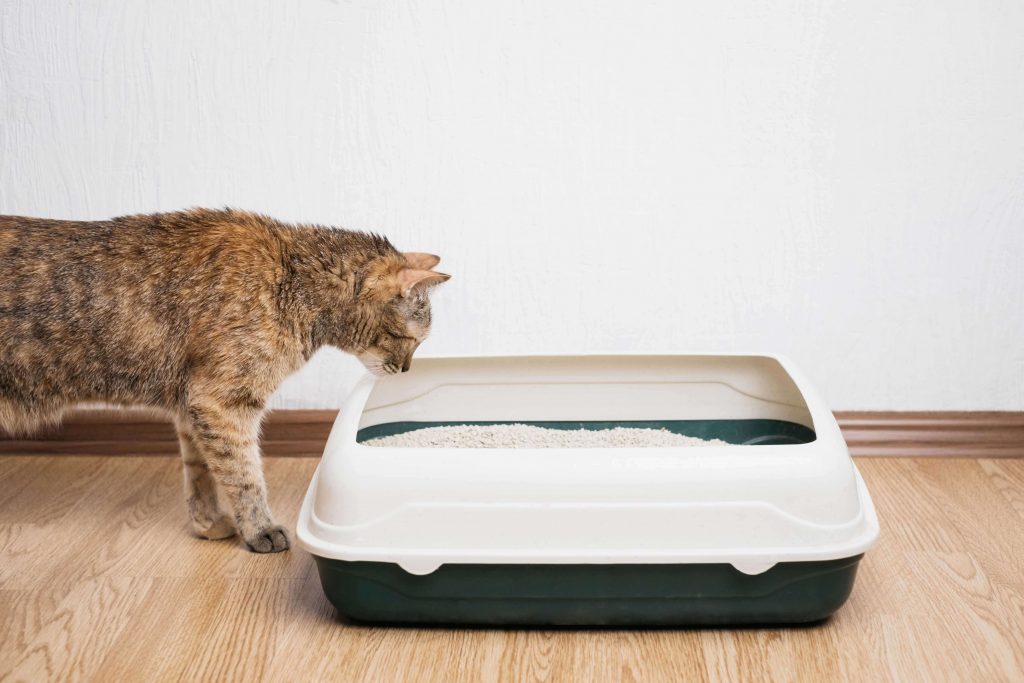
CAUTION: Not every cat likes scented litter or odour stoppers in their litter box!
Alternative ways to dispose of cat litter
Many cat owners think they’re buying a natural product when they purchase a mineral litter based on bentonite, clay or sand-lime brick. And while it’s true that the material is natural, unfortunately the extraction, production, transportation and ultimately the disposal of this type of litter is neither sustainable nor environmentally friendly. Conventional cat litter is harmful to the environment because it’s made from non-renewable raw materials: bentonite is a limited resource that comes from open-cast mines, just like coal, while silica is produced cheaply in chemical processes in Asia. Vast amounts of environmentally harmful CO2 are released during processing and transportation as well as in the course of waste disposal after the litter has been used. And this litter cannot be recycled after use, which means it inevitably ends up in residual waste and landfill. Are there any alternative ways to dispose of soiled cat litter?
Dispose of cat litter in the compost
Is it possible to dispose of cat litter in the compost? This is an absolute no-go in the case of mineral cat litter, as it does not decompose. In the case of clean plant-based cat litter, it is theoretically possible to compost it. Doing so would conserve resources and be good for the environment. You would have to make sure that the compost is well mixed and sufficiently decomposed. In Germany, the treatment and recycling of organic waste is regulated in the Closed Substance Cycle Waste Management Act and the Organic Waste Ordinance. The manner in which organic waste may be recycled is specified in the Fertiliser Ordinance and the Fertilising Ordinance. Some of the organic waste from the organic waste bin is composted and then reused as fertiliser. Unfortunately, however, there are no consistent guidelines for the disposal of biowaste in the private sector – for example in your own garden. If you want to be on the safe side, contact your local or regional waste disposal company and ask them for advice!
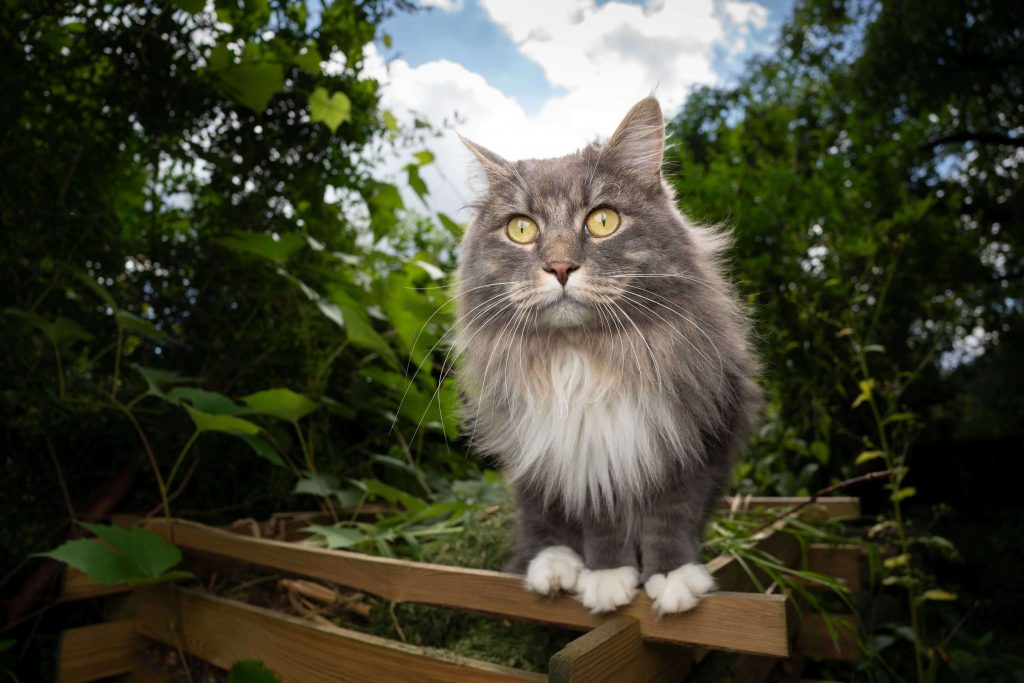
REMINDER:
Plant-based cat litter like Cat’s Best® breaks down completely by means of a natural decomposition process; it’s compostable and can act as a valuable fertiliser that promotes soil quality in your garden. However, cat excrement and cat urine should only be disposed of in the residual waste bin. If the cat litter is contaminated, it is not suitable for use as fertiliser for your vegetable patch!
Disposing of cat litter at a recycling centre
Cat litter can also be disposed of at your local recycling centre. However, this does not apply nationwide: while some districts offer the disposal of used cat litter at local recycling depots and reusable material centres,
other municipalities might not offer such services. Only certain types of waste are permitted for disposal, and each district will charge different fees depending on the type and quantity of waste in question. Most recycling centres will not accept cat litter in bulk. Before you set off for the recycling centre, you should find out what kinds of litter they accept and how it should be packaged. What are the costs involved and when can your bring your used cat litter in? Do they only accept litter if it’s in bags or containers? It’s best to contact your local waste authority to find out what regulations apply.
Is it OK to put cat litter in the toilet?
Whether cat litter can be disposed of in the toilet depends on the type of litter you’re using. Conventional cat litter made of bentonite, lime quartz sand or silica should never be disposed of in the toilet! Cat excrement itself can be disposed of in the toilet if you flush thoroughly afterwards, but never put the litter itself in the toilet! Cat litter absorbs liquid, and when liquids are bound inside the litter, the granules will swell up and potentially block the toilet’s drainage pipes to such an extent that it also blocks the drainage into the sewer system. One exception is ecological cat litter based on plant fibres: if the regulations in your municipality permit it, you can also dispose of plant-based cat litter such as Cat’s Best® via your household toilet.
⁶Source: Cat´s Best- Katzenstreu, [YouTube-Video.], „#howtouse“ from 20 march 2018,Cat’s Best Katzenstreu – #howtouse (youtube.com), accessed on 18 March 2024
TIP:
Cat’s Best® granules merge with cat urine to form a stable clump that can be easily disposed of in the toilet. Pour in individual clumps, wait a moment for the litter clump to dissolve and then flush the toilet.
FAQs – Disposing of cat litter
Whether or not you’re permitted to put cat
litter in the organic waste bin depends on the regulations of your local waste disposal authority. When it comes to composting, many countries don’t yet permit cat-litter products in organic waste bins. However, as a residue-free, CO2-neutral energy source, natural plant-based cat litter makes a positive contribution to the
environment and resource conservation even when disposed of via regular waste incineration..
It is not permitted to put conventional cat litter made of bentonite, lime quartz sand or silica in the toilet. You can put cat excrement in the toilet, but only if you flush thoroughly afterwards. Never put cat litter in the toilet. The only exception to this rule is ecological cat litter based on plant fibres and only if the disposal regulations in your area permit it. In other words, a plant-based cat litter such as Cat’s Best® can also be disposed of in the household toilet.
How often you change your cat’s litter depends on the type of litter you’re using in the litter box. It also depends on how active your cat is as well as what kind of food it eats, how much food it eats and how good it is at metabolising that food. Litter that forms clumps can be used for longer: after you remove the soiled clumps, you can still use the clean litter that remains.
Conventional cat litter made of bentonite, lime
quartz sand or silica belongs in the residual waste bin. What is residual waste? Residual waste is all waste that cannot be collected
separately or recycled. In Germany, the disposal of plant-based cat litter in the organic waste bin is regulated at state level. In other words, your local waste disposal authority is
responsible for deciding what kind of cat litter is allowed in the organic waste bin, if at all.
Cat litter should never be disposed of in the woods, in forests, in fields or in your own garden. Clay-based litter is not capable of decomposing and the waste will not disintegrate. In contrast, plant-based cat litter is made from natural fibres such as wood, corn
or straw, so its raw materials are biodegradable and compostable. Still, used and contaminated litter can contain toxoplasmosis pathogens: if cats have eaten raw meat, they can excrete oocytes in their faeces
The amount of cat litter you put in your cat’s litter box depends on the type of litter you’re using, whether it can absorb liquid quickly, and how high the litter level has to be in order to prevent liquids from seeping down to the base of the box. Conventional cat litter only partially absorbs moisture, which means the remaining liquid will collect at the bottom of the litter box and form an ideal breeding ground for germs.
